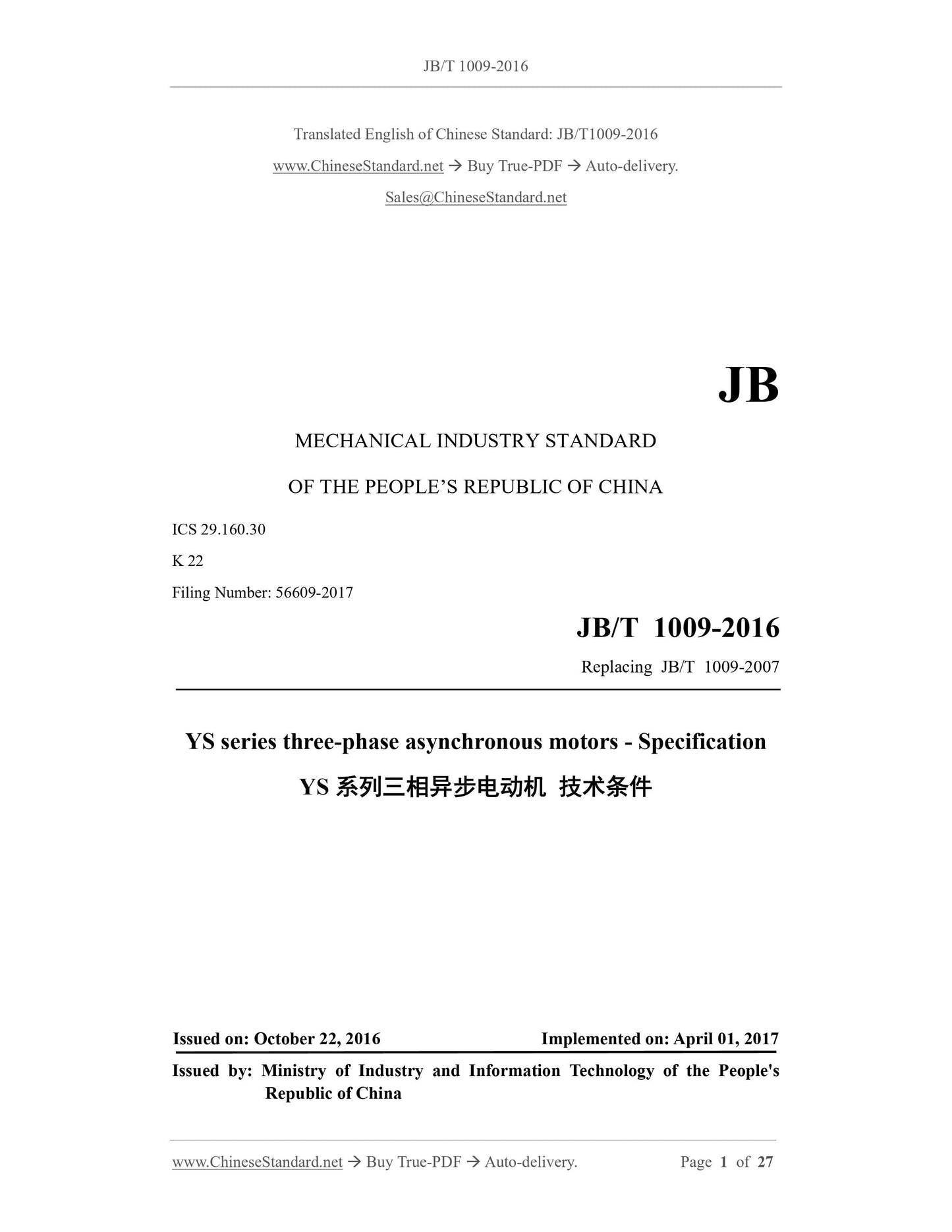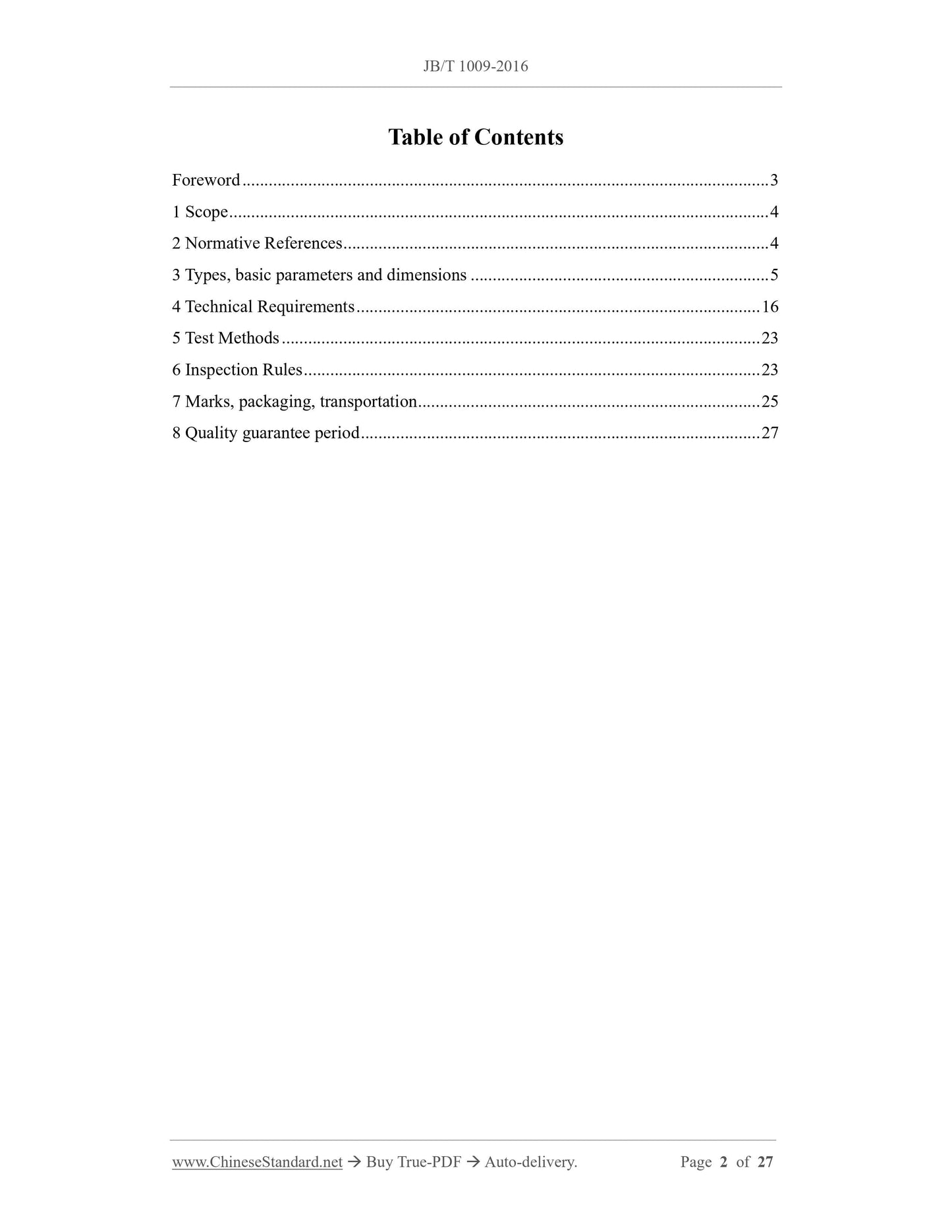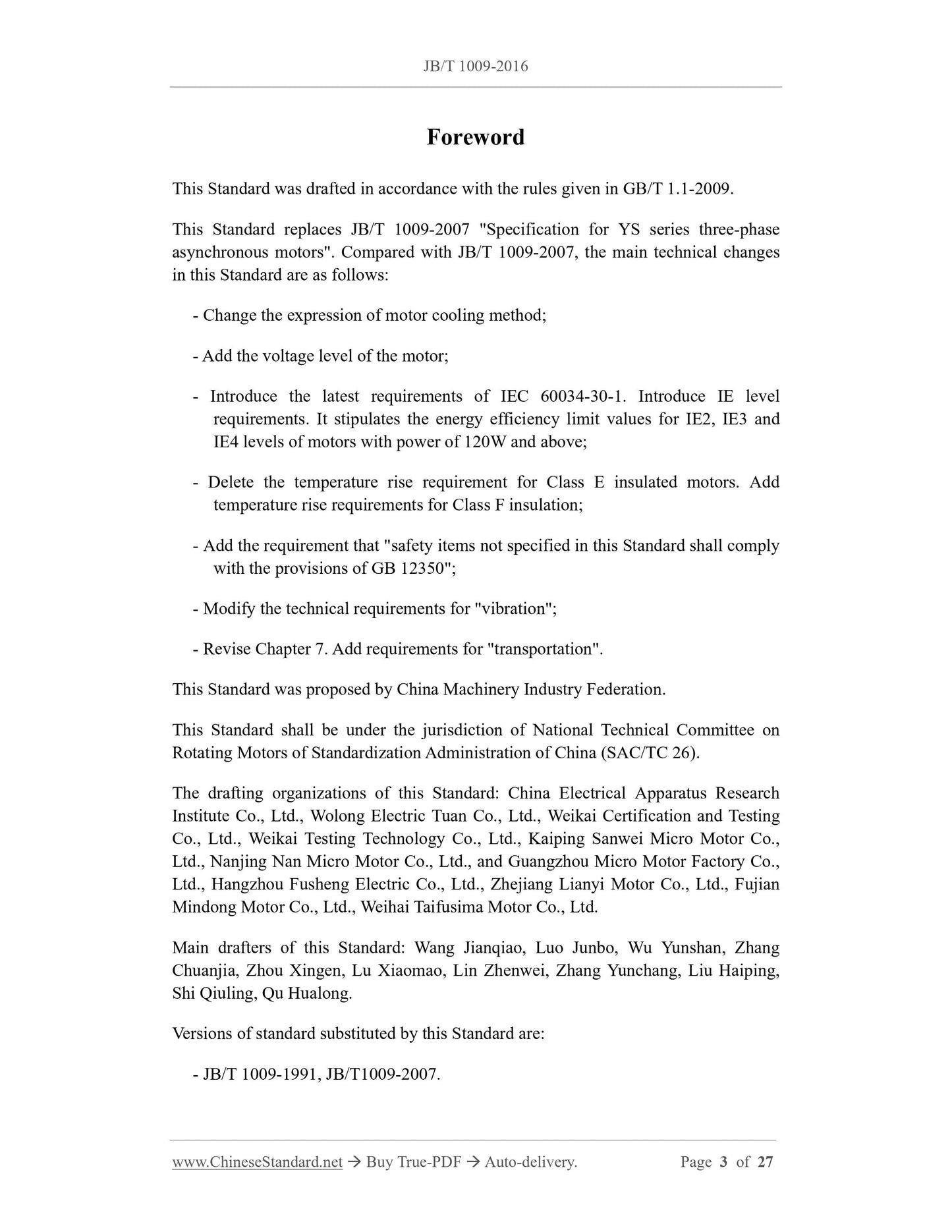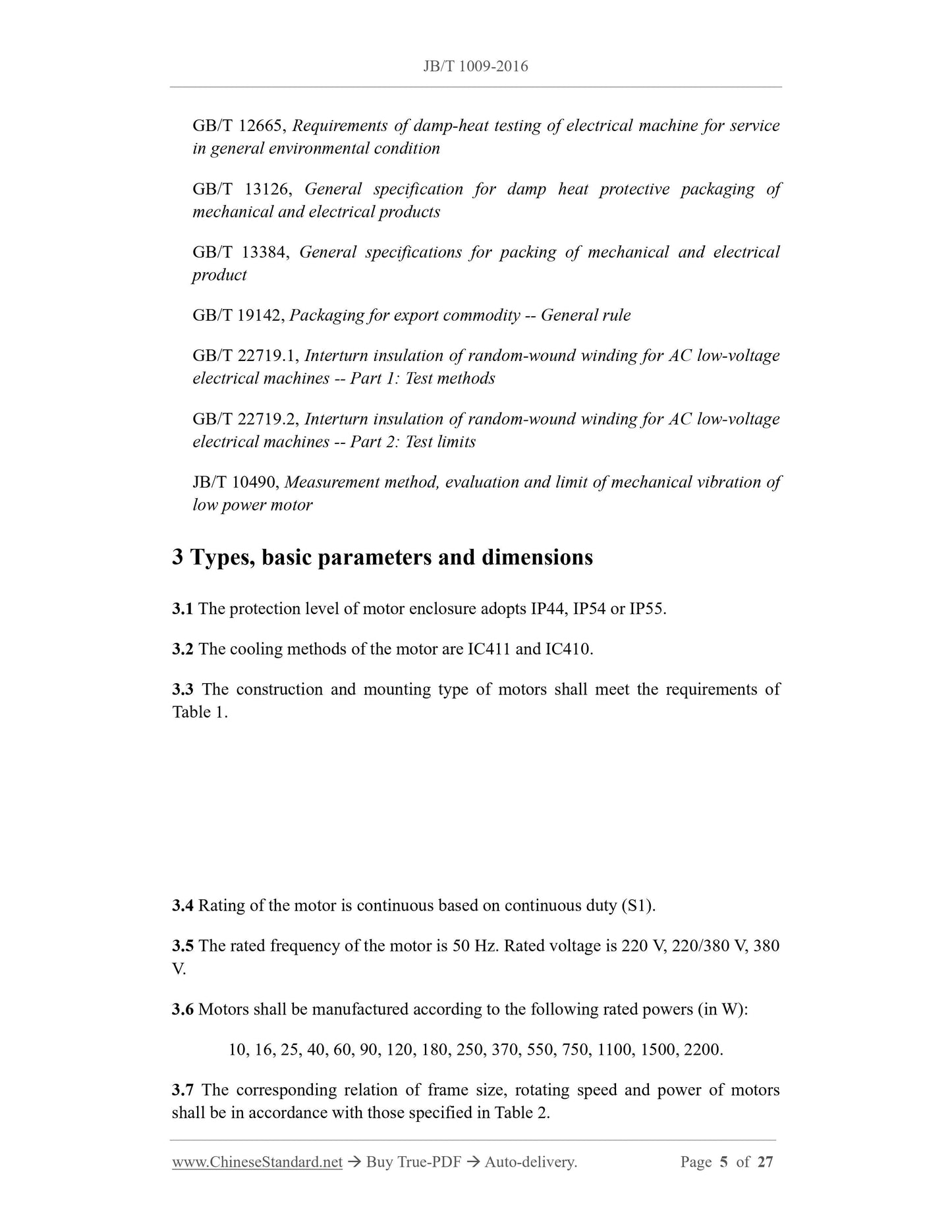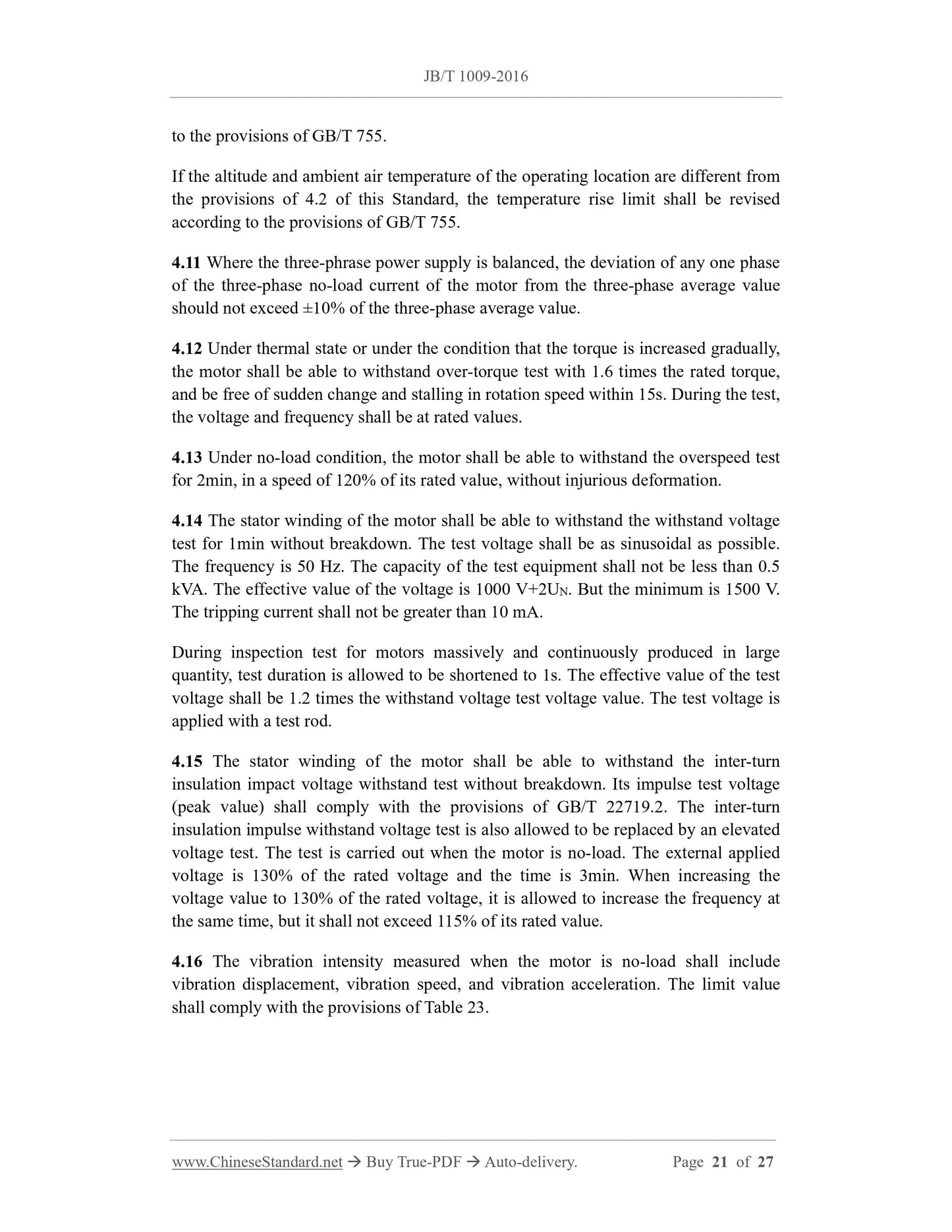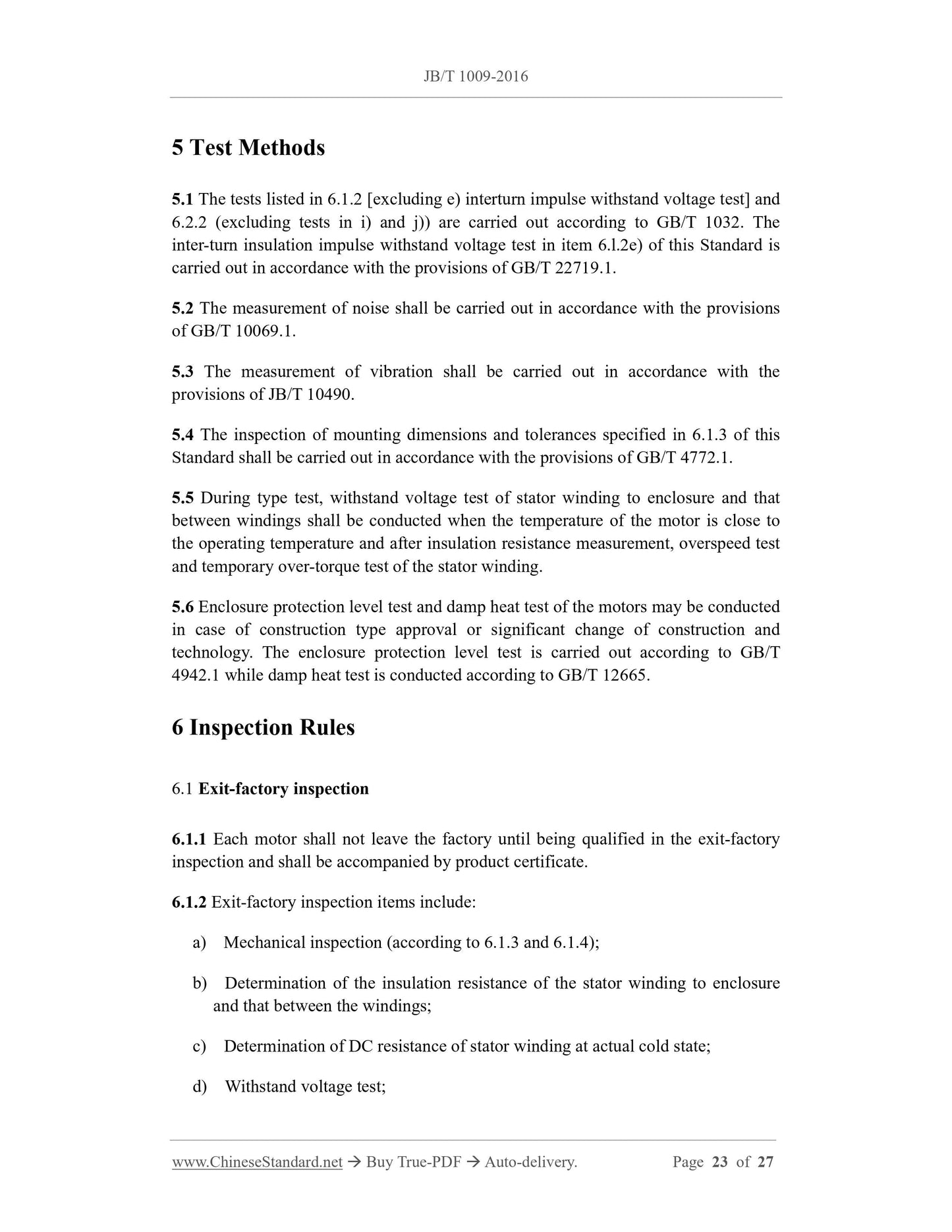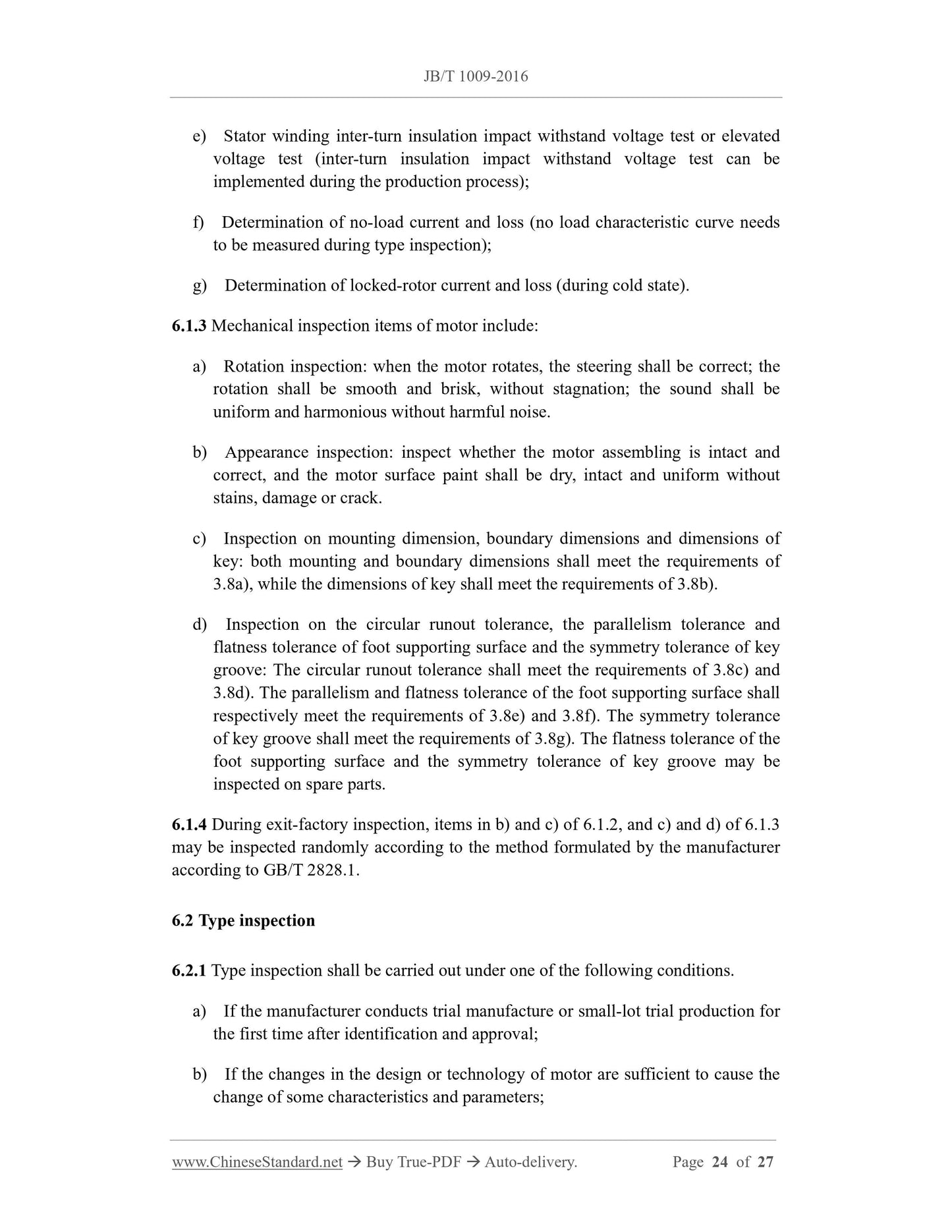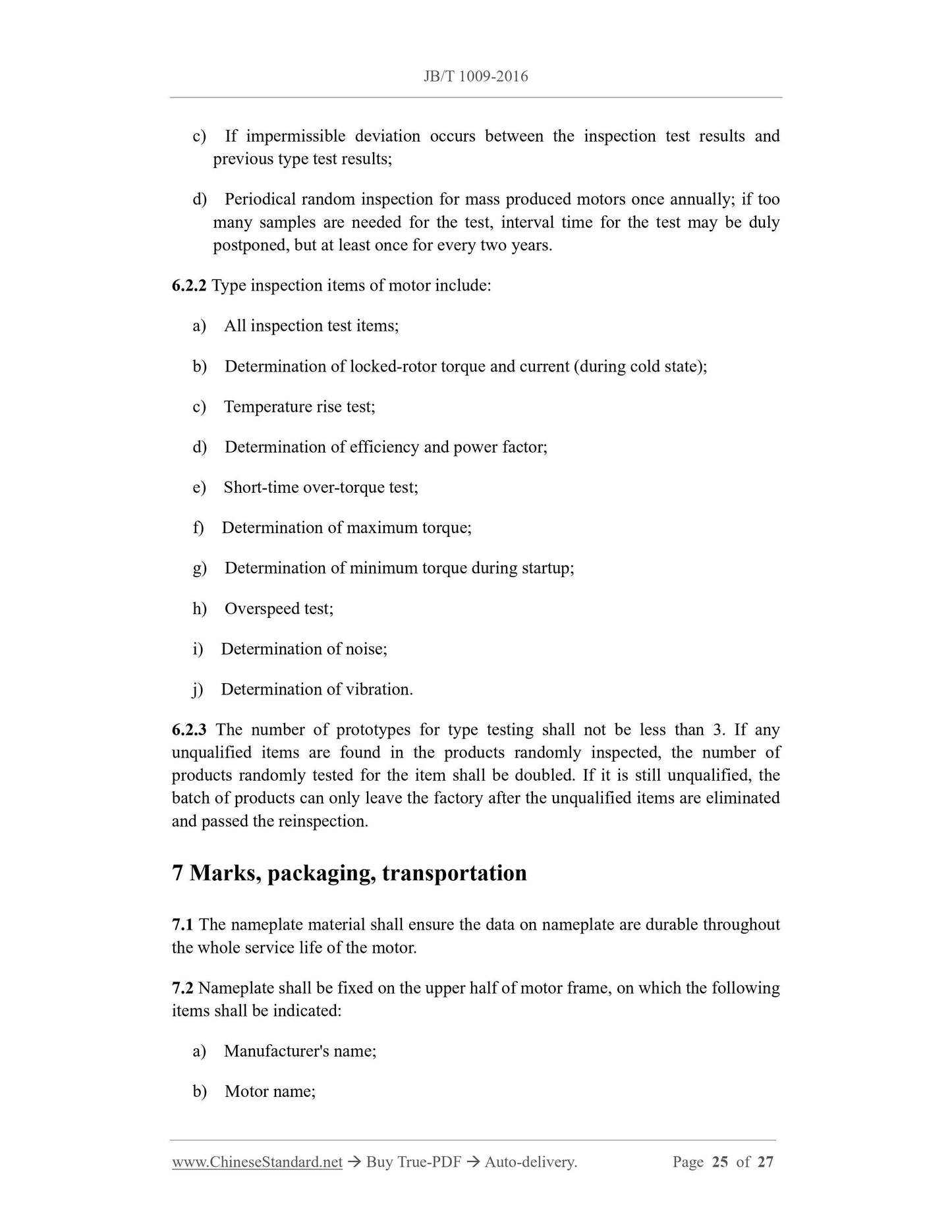1
/
of
9
www.ChineseStandard.us -- Field Test Asia Pte. Ltd.
JB/T 1009-2016 English PDF (JB/T1009-2016)
JB/T 1009-2016 English PDF (JB/T1009-2016)
Regular price
$435.00
Regular price
Sale price
$435.00
Unit price
/
per
Shipping calculated at checkout.
Couldn't load pickup availability
JB/T 1009-2016: Specification for YS series three-phase asynchronous motors
Delivery: 9 seconds. Download (and Email) true-PDF + Invoice.Get Quotation: Click JB/T 1009-2016 (Self-service in 1-minute)
Newer / historical versions: JB/T 1009-2016
Preview True-PDF
Scope
This Standard specifies YS series three-phase asynchronous motor in terms of type,basic parameters and dimension, technical requirements, test methods, inspection
rules, marks, packaging, transportation and quality guarantee period.
This Standard is applicable to YS series three-phase asynchronous motor (frame size
45~90) (hereinafter referred to as motor), and all other series motors derived from YS
series three-phase asynchronous motor may also refer to this Standard.
Basic Data
| Standard ID | JB/T 1009-2016 (JB/T1009-2016) |
| Description (Translated English) | Specification for YS series three-phase asynchronous motors |
| Sector / Industry | Mechanical and Machinery Industry Standard (Recommended) |
| Classification of Chinese Standard | K22 |
| Word Count Estimation | 20,27 |
| Date of Issue | 2016-10-22 |
| Date of Implementation | 2017-04-01 |
| Older Standard (superseded by this standard) | JB/T 1009-2007 |
| Regulation (derived from) | Ministry of Industry and Information Technology Announcement No.56 of 2016 |
| Issuing agency(ies) | Ministry of Industry and Information Technology |
| Summary | This standard specifies the type, basic parameters and dimensions, technical requirements, test methods, inspection rules, marking, packaging and transportation requirements of YS series three-phase asynchronous motors. |
Share
